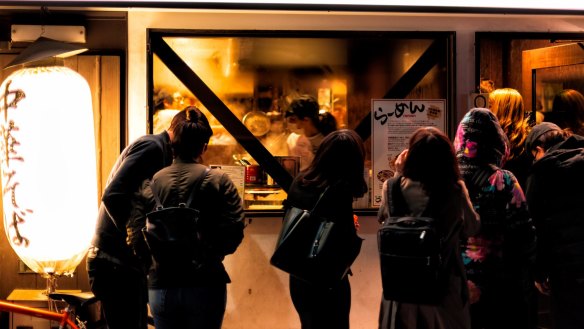Adam Liaw on why we need to be fine with dining time limits

COMMENT
I remember the first time I was given a time limit in a restaurant. It was 20 years ago and I'd recently moved to Japan. Not speaking a word of Japanese, I asked a friend to book me a table at a popular but casual place in Tokyo's Ebisu district.
No problems with the booking, she reported back, but I'd need to leave the table after 90 minutes.
Related Article
Wait, what?
Growing up in Adelaide, this was something I'd never heard of before. A restaurant telling me when I had to leave? What if I wanted another bottle of wine, or a slow linger over dessert?
My friend tried to explain that it was entirely normal in Japan, but to me it was the height of rudeness. Would a restaurant really haul me up out of my chair and push me out the door? I was planning on a leisurely dinner, not a quick dine and dash. I felt offended, and asked her to cancel the booking.
A table in a restaurant is no more "yours", than a lane you might be driving in at any given time. There are rules for driving but there is also etiquette, and so it should be for dining.
Fast forward a couple of decades and I was out for lunch with my family in this COVID-normal world. We lined up for a table at a local, physically distanced casual ramen restaurant. It's a popular place and the line was probably 30 or so people long. With restrictions their usual 20 tables are down to about eight so there's always a wait. Staring into the restaurant I noticed a young couple chatting over their untouched bowls of noodles.
(As a ramen nerd this sits uncomfortably with me from the start. The accepted wisdom of ramen is that it's a dish that should be eaten quickly, slurped down in less than 10 minutes to avoid the noodles from "stretching" in the soup. That said, I'm not a nutcase. If you want to eat your noodles at a comfortable pace that's your choice. I won't judge.)
I paid little attention to the couple but after we waited for a further half hour, sat, ordered, ate and left, I noticed the same couple still sitting there, still chatting, now over an empty table. The line outside had by then grown to about 50 people.

The rise of the no-bookings restaurant baffled us all a few years ago, but now it's par for the course at the busier joints in our bigger cities. Both that phenomenon and increasingly tight and odd timelines for sittings (my wife recently had a booking for – ahem – "dinner" that *finished* at 6.30pm) are the result of a simple truth in the modern hospitality industry: most restaurants need to turn tables, and a lot of them, to turn a profit.
For most of Australia's modern history the intersection of economics, dining culture and population has been in a way that timed sittings at restaurants has largely been unnecessary. That's no longer the case.
In post-lockdown Melbourne, restaurant-set time limits have become a reality, and while it might not be as prescriptive in the rest of Australia, the etiquette has to shift, too.
I understand people feel entitled to take their time at a meal, but I'd argue that a table in a restaurant is no more "yours", than a lane you might be driving in at any given time. There are rules for driving but there is also etiquette, and so it should be for dining.
In the roughly 90 minutes that ramen-gazing couple sat at a table that could seat six, and spent perhaps $40 on noodles, the restaurant could have had maybe 15 other customers through and made 10 times the money. Not to mention how much a seat would have been appreciated by the dozens of people standing in the cold outside.
For that couple it was a nice chat. To the restaurant it was few hundred dollars of opportunity lost. In some cases that's the difference between being in the red or the black at the end of the day.
In the shadow of COVID, the Australian hospitality landscape has shifted dramatically. Margins are thin or non-existent, staff scarce and debts high. Australian dining etiquette needs to evolve to meet the economics of a changing dining culture, and that requires a bit of give and take.
If there's a big line of people outside there's no need to rush your food, but perhaps be more considerate of the restaurant and others before you decide to nurse a glass of free tap water and twirl your napkin for an hour. If your local cafe is struggling to seat people for lunch perhaps think twice before pulling out your laptop and settling in for the afternoon with a single piccolo.
If we as diners can't be more considerate of venues, or the other diners we share those venues with, then what could be managed by etiquette will instead become rules.
I don't think anyone wants all venues to start removing dessert from the menu, limiting seating times to an hour, introducing minimum spends, no-devices policies and surcharges just so they can stay afloat, when a little understanding would do the job just as well.
The old adage of "the customer is always right" hasn't been true for a very long time. We need to stop pretending we're entitled to the moon from a place that exists to give us a nice meal at an affordable price.
Appears in these collections
More:

